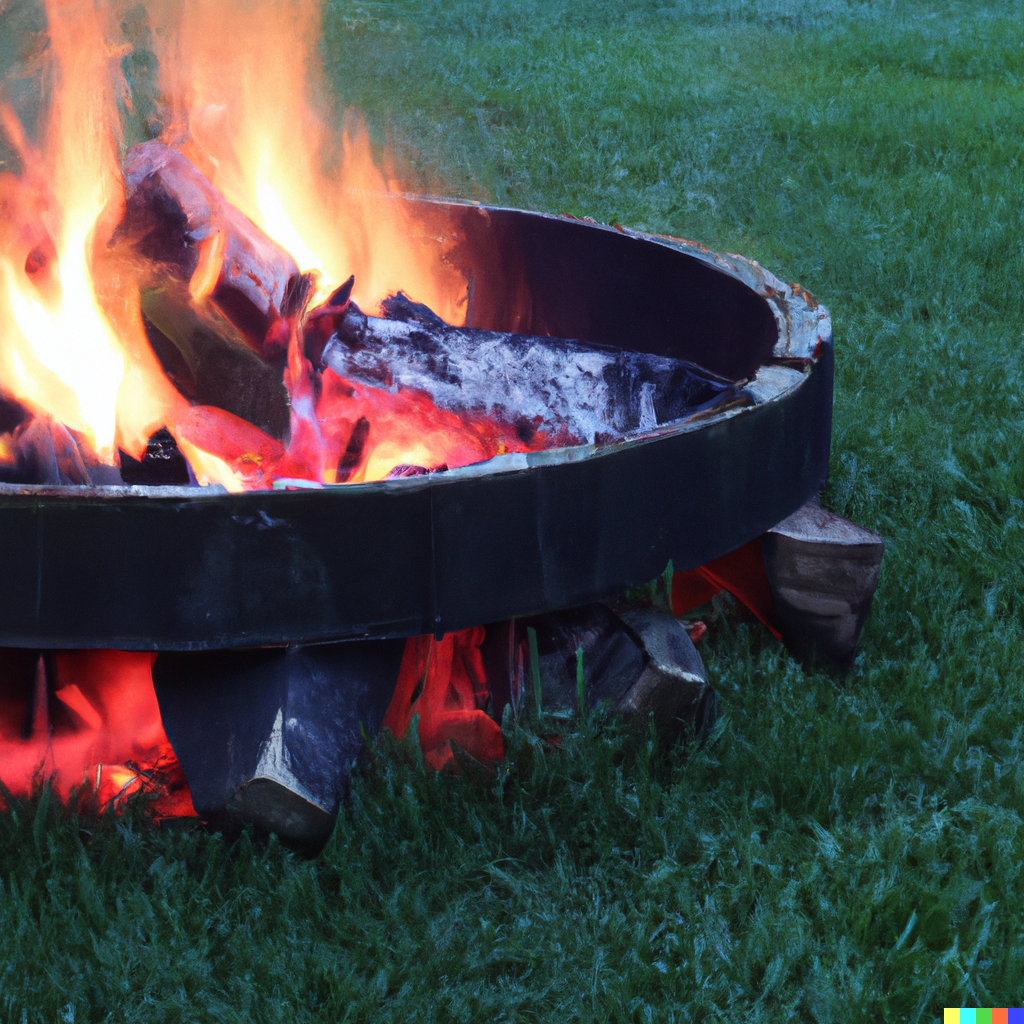
Gathering around a warm and inviting bonfire becomes an enticing prospect for many in the UK. A bonfire can add a touch of magic to outdoor gatherings, creating cherished memories with friends and family. However, safety must be the foremost concern when embarking on this enjoyable activity. In this guide, we’ll walk you through the steps to create a safe area for your bonfire and responsibly start it using pallet wood and garden waste.
1. Choosing a Safe Location
Selecting the right location for your bonfire is crucial to ensure the safety of everyone involved and protect the surrounding environment. Follow these tips:
- Opt for an open area, away from any buildings, trees, fences, and other flammable materials. A minimum distance of 10 meters is advisable.
- Make sure there are no low-hanging branches or overhead obstructions that could catch fire.
- Before lighting the bonfire, check local regulations and restrictions to ensure it is permissible in your area.
2. Gathering Materials
To get your bonfire started, you’ll need the following materials:
- Pallet wood: Choose clean and untreated pallets. Avoid those that are painted or stained, as the chemicals could release harmful fumes when burned.
- Garden waste: Collect dry leaves, small twigs, and other garden debris as kindling to help ignite the fire.
3. Preparing the Site
Before lighting the bonfire, take the necessary precautions to create a safe environment:
- Clear the ground of any flammable materials, such as dry grass or leaves, within at least a 3-meter radius of the fire site.
- Establish a fire ring or circle using rocks or a metal fire pit to contain the fire safely and prevent it from spreading.
4. Safety First: Keep Water Nearby
Always be prepared for any unforeseen circumstances. Have a hose, buckets of water, or a fire extinguisher nearby in case the fire needs to be extinguished quickly. Safety should never be compromised.
5. Weather Check
Weather conditions play a significant role in fire safety. Avoid lighting a bonfire on windy days, as strong gusts can spread embers and cause the fire to get out of control. Choose a calm day with minimal wind to enjoy your bonfire safely.
6. Starting the Bonfire
Now that you have everything prepared, it’s time to start the bonfire:
- Place a few handfuls of dry garden waste in the center of the fire ring as kindling.
- Carefully arrange the pallet wood around the kindling, leaving space between the wood pieces for proper airflow.
- Light the kindling from the windward side of the bonfire using matches or a long-reach lighter.
7. Monitor the Fire
Once the bonfire is lit, never leave it unattended. Designate a responsible person to supervise the bonfire at all times. Avoid adding too much wood at once, as this can cause the fire to grow too large and become difficult to control.
8. Extinguishing the Fire Safely
After enjoying your bonfire, it’s time to put it out responsibly:
- Allow the bonfire to burn down to a safe level before leaving the area or going to bed.
- Use a shovel or rake to spread out the embers and ashes within the fire ring.
- Pour water over the fire and ashes, ensuring everything is thoroughly wet.
- Stir the ashes and embers to make certain all the hot spots are extinguished.
- Repeat the process of adding water and stirring until you are confident the fire is entirely out.
Conclusion
A bonfire can be a delightful experience, bringing people together and creating unforgettable moments. By following these safety guidelines and responsibly managing your bonfire, you can ensure that everyone enjoys warmth and camaraderie without compromising anyone’s safety or harming the environment. Embrace the beauty of a crackling bonfire while fostering a safe and responsible approach to this cherished tradition. Happy bonfire season!
